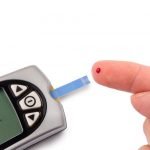Supporting Skin Through the Aging Process
Using Diet, Lifestyle, Supplementation and Topical Therapies
Carol Morley, BKin, ND
Claire Girgis, HBSc, ND
Skin, the largest body organ, acts as an interface between internal and external environments. As such, it is continually influenced by internal anatomical, physiological, and biochemical changes as well as external exposure to temperature, pollutants, radiation exposure, mechanical pressures, etc. With such variable factors affecting skin through the course of life, it is not surprising to note the drastic changes that occur in the nature, texture, and integrity of skin with age. The aging process affects skin at every layer, both internally and externally.
Overview
Various measures can be implemented to promote the health and integrity of skin during the aging process and to reduce the appearance of the effects of aging. The importance of a healthy diet and proper hydration underlie all efforts to maintain optimal youthful skin. In addition to proper nutrition, the use of various nutritional supplements such as vitamins A, E and C, zinc, and EFA supplements have been shown to have anti-aging and skin-enhancing effects. Herbal supplements can also be used to support the promotion of skin health at its root. By targeting energetic and mechanical factors in aging skin, cosmetic acupuncture provides significant benefits in firming, toning, and lifting facial skin and features. When combined with exfoliation techniques such as natural microdermabrasion as well as topical skin emollients, the external appearance and internal health of skin can be vastly improved.
The aging process manifests in various ways as changes in the appearance and texture of the skin. These changes include the development of fine lines and deep wrinkles, loss of elasticity, discoloration, and reduction in subcutaneous adipose tissue.1,2 Aging skin also experiences slower turnover, division, and differentiation of cells, particularly keratinocytes and fibroblasts.3,4 As a result, wound healing and natural exfoliation are reduced. Changes in superficial vasculature also play an important role in skin changes as reduced perfusion of tissues results in compromised hydration and nutritional exchanges with skin cells, and subsequent reduction in function and appearance.5 With aging, collagen becomes less soluble and less flexible due to various biochemical changes, including oxidative and free-radical damage, resulting in fine lines and wrinkles.6 These changes, together with reduced perfusion of the skin, result in a greatly increased need for proper hydration of the skin to maintain the integrity and nature of collagen.6 In addition to an increased need for hydration, aging skin also requires antioxidant measures to slow and/or reverse the damages of the aging process.6
Lifestyle and Nutrition
Water Intake and Exercise
To satisfy the increased need for hydration that results from the reduced solubility of collagen and diminished circulation associated with aging skin, optimal water intake is essential. In addition to proper hydration, aerobic exercise should be considered as part of a protocol to further compensate for reduced surface vasculature and blood circulation seen with aging.2 Regular exercise, in addition to promoting weight management, cardiovascular, and endocrine health, which themselves positively influence skin health, also acts by promoting oxygenation, nutrient exchange, and detoxification of skin cells.7 Additionally, it promotes the proper structure and function of collagen and improves lymphatic drainage which also contributes to healthy, vibrant skin.7 Furthermore, by helping to promote relaxation and balance, exercise helps to protect skin from the detrimental effects of stress.7
Smoking
Smoking introduces multiple chemicals into the body that produce oxidative damage and contribute to the effects of aging. Studies of aging skin, as measured by a photographic scale of photo damage, and comparing the presence of wrinkling and changes in pigmentation in twin cohorts have shown a significant positive correlation of age damage with smoking status and weight.8 This study and other supporting findings indicate the importance of smoking cessation in the promotion of healthy skin, among other health benefits.
Sun Exposure
Sun damage can occur as a result of regular mild to moderate sun exposure. Sunburns are a major contributor to future skin damage associated with early skin senescence.6 Sun exposure also predisposes the skin to the development of premalignant lesions and potential malignancies. This predisposition is further compounded by immunological changes and tumorigenesis associated with aging skin, further increasing the risk of skin malignancies.9
Antioxidant foods
To counteract the effects of oxidative damage on the skin and to slow the progression of signs of aging, antioxidant compounds should be included in the diet. Foods rich in vitamins C and E, carotenoids, anthocyanidins, and other antioxidant phytochemicals should be considered.6 Anthocyanidins are natural plant pigments that have powerful antioxidant properties and can be found in dark-colored fruits such as berries, grapes, plums and prunes.6 Studies also support the efficacy of the intake of green and yellow vegetables to slow and/or reverse the appearance of fine lines and wrinkles.10
Healthy Fats
The regular intake of dietary monounsaturated and polyunsaturated fatty acids have been found to improve the health of aging skin by providing optimal hydration and by restoring cell membrane integrity to the skin. Nagata et al measured elasticity of aging skin and, while controlling for factors such as age, smoking status, and sun exposure, found that higher intake of total fats (including saturated and unsaturated) were associated with better skin elasticity.10 Considering the added benefits of unsaturated fats for cardiovascular and neurological health and the detrimental effects of excess saturated fats, increased intake of monounsaturated (eg, nuts, seed oils, olive oil, avocado) and polyunsaturated fatty acids (eg, fish, whole grains) appears to provide an all around benefit for aging skin, as well as other health benefits.10
Nutritional Supplementation
Essential Fatty Acids
The omega-3 fatty acids present in fish oils (and other sources) exert various actions that promote healthy skin. Among their properties, these compounds provide hydration to skin cells, stabilization of cell membranes, and are essential for the proper turnover and differentiation of cells.2 In addition, essential fatty acids (EFAs) exert anti-inflammatory properties that can help to manage various skin conditions associated with aging. Studies have also shown the efficacy of fish oil supplementation for improving skin elasticity. Segger et al studied the skin of 24 healthy women between the ages of 40 and 60 using an optical cutometer.11 This study demonstrated a 10% increase in elasticity, relative to a control group, after 3 months of fish oil supplementation.11
Linoleic acid (omega-6) has also been found to have benefits in promoting youthful skin appearance. A survey study of skin-aging factors conducted on 4025 women ages 40 to 74 found higher dietary intake of linoleic acid to be associated with reduced skin dryness and atrophy.12
Vitamin E
Vitamin E, applied topically, acts as an antioxidant to reduce cellular damage associated with aging. It also reverses changes to collagen, restoring its solubility and flexibility, and subsequently slowing and reversing the appearance of wrinkles.6 It is beneficial to increase the intake of vitamin E-rich foods (eg, dark green vegetables, dairy, eggs, avocado) in the diet for their antioxidant properties.6 Studies have shown that a combination of vitamins C and E may have an additive effect in reducing the inflammation resulting from solar simulated radiation and may potentially have benefits in reversing sun damage that contributes to aging.13
Vitamin C and Zinc
Vitamin C has its primary anti-aging effect in its role in collagen production, which is compromised in the aging process. Zinc also plays an active role in collagen production, regulates essential enzymes, and aids in the transport of vitamin A from the liver to the skin. Studies have supported the efficacy of oral supplementation and topical application of vitamin C, as well as zinc for the reduction of fine lines and wrinkles associated with aging. Traikovich showed that a 10% vitamin C topical application results in significant improvements in the appearance of wrinkles and other damage resulting from sun exposure and aging.14 Further studies conducted by Raschke et al showed that as little as 3% vitamin C is effective as a topical application in improving aged skin.15
Vitamin A
Retinoic acid and other vitamin A compounds are essential for proper maintenance of the skin. Vitamin A acts by influencing the expression of genes that code for the production of essential structural proteins found in the skin, such as keratin. The effects of vitamin A in the form of topical retinol were found to be effective in the rejuvenation of photo-aged facial skin in middle-aged women.16 Kikuchi et al found that a 0.075% topical retinol application used for 26 weeks resulted in a more than 2-fold advantage in the reduction of fine wrinkles and a significant advantage in deep wrinkles.16 Related studies have shown that a 0.04% retinol application for 13 weeks resulted in some improvement and was well-tolerated by test subjects.16
Botanical Medicine
Camellia
The catechins in Camellia sinensis extracts have been well researched and documented, specifically epigallocatechin gallate (EGCG). Reviews of research evaluating the medicinal properties of EGCG show antioxidant, antiproliferative, and antiangiogenic benefits.17 Researchers have extended green tea’s antioxidant benefits to include protection against the damage caused by cigarette smoke, pollution, stress, and various toxins.18,19 Based on their findings one could conclude its benefits would extend to slowing the progression of aging skin.
Few realize the topical application of Camellia japonica seed oil has also been investigated, with no adverse reactions or human skin irritation. Transepidermal water loss was examined pre-application and at 1-hour and 2-hour intervals post-application of C. japonica oil and was shown to be reduced.20 Even more encouraging is the anti-wrinkling potential of C. japonica oil and how it acts on the quantity and quality of human collagen. Human type I procollagen synthesis has been shown to be induced by the topical application of Camellia oil.20
Perilla frutescens
The seed oil of Perilla frutescens is 50-60% alpha-linolenic acid. The antiradical and antioxidant activity of Perilla frutescens has been measured using various methods and has shown 91.9% inhibition on lipid peroxidation.21 Perilla’s anthocyanins were found to be an effective free-radical scavenger comparable to alpha-tocopherol. Since the antioxidant and anti-inflammatory properties have been reported, a few studies have postulated potential anticancer activity and stated Perilla frutescens induced apoptosis and G1 phase arrest in human leukemia cells by various pathways.22 Perilla frutescens extract also looks promising in treating hepatocellular carcinoma.23
Cosmetic Acupuncture
Today’s society puts tremendous value on youth and appearance. There is an endless search for the fountain of youth in surgical and non-surgical cosmetic procedures and a quest for the most age-defying topical cleansers and moisturizers.
As a result, many are turning to natural prescriptions for anti-aging and Traditional Chinese Medicine for an acupuncture face-lift to improve the complexion and elasticity while reducing fine lines, sagging, and puffiness under the eyes. The wisdom of these facial rejuvenation techniques has been handed down over the centuries and written in classic Chinese texts such as Classic of Mountains and Seas, Yellow Emperor’s Inner Classic, and The Divine Husbandman’s Classics of Materia Medica. Further refinements occurred between the years of 618 and 1644 A.D. and acupuncture as a means to facial rejuvenation gained even greater recognition with texts like The Life Promoting and Prevention Classic of Acupuncture and Moxibustion and Zhou’s Great Compendium of Acupuncture and Moxibustion.24,25
While the history of using facial rejuvenation techniques has been recorded in classic texts, further evaluation has been documented more recently as well. The International Journal of Clinical Acupuncture reported a study where 90% of 300 cases treated with facial acupuncture saw noticeable effects after just one course of treatment.26 More case presentations similar to Barretts’ in the Aesthetic Surgery Journal and Thambirajah’s in Journal of Chinese Medicine, showing increased facial tone, decreased facial edema, and improved skin texture in patients need to be published as facial acupuncture increases in popularity.27,28
Conclusion
Multiple factors contribute to the internal and external process of skin senescence. Significant anti-aging benefits can be obtained from diet and lifestyle modifications, internal and topical use of nutritional and herbal supplements, as well as the use of cosmetic acupuncture. As with the treatment of any other clinical condition, the prevention and treatment of aging skin should be based on the patient’s individual history. Careful consideration to particular exposures and predisposing factors must be addressed. As NDs we are well equipped to support patients through the aging process.
Case
45-year-old female
CC: bags under eyes, rosacea, lip wrinkles, fatigue
Relevant History: Quit smoking a year ago after 20 years, minimal sun exposure annually, menses normal, 2 glasses of water QD, regular bowel movements
Objective: Soft bags under eyes bilateral, mild rosacea on cheeks bilateral, crow’s feet, upper lip wrinkles, minor nasolabial folds
Treatment:
increase water intake
1300 mg evening primrose oil BID
Supplement that has a combination of plant antioxidants (Vitis vinifera, Camellia sinensis, quercetin, etc) – 1 capsule BID
2 cosmetic acupuncture treatments weekly for 2 weeks and then 1 cosmetic acupuncture treatment weekly for 8 weeks, followed by a monthly maintenance session for 6 months.
Acupuncture points inserted in the following order, all bilateral unless otherwise noted:
Auricular and body: shen men, LI 4, LV 2, LV 3, GB 41, GB 43, KI 3 right, KI 6 left, ST 36, ST 40, GB 34, SP 9, yin tang
scalp and eyebrow (all are lifted up and pinned): GB 18, BL 6, GB 14, BL 2, yu yao, TW 23
sculpting face (upwards and under bone): ST 3, SI 18
bags under eyes: ST 3 (already inserted), GB 1
nasolabial folds: thread up from ST 4 to LI 20
crow’s feet wrinkles: intradermal needles towards the eye
lip wrinkles: intradermal needles inserted at termination of wrinkle towards lip, GV 26, LI 19
rosacea: GV 7, GV 20, ST 43
Microdermabrasion before each treatment to improve skin texture and to minimize rosacea
Weekly green tea face mask as at-home treatment:
matcha green tea powder, homeopathic anti-inflammatory cream, botanical serum, and rose water combined and applied to face for 15 minutes before removing
Topical botanical (Camellia based) serum prescribed to use nightly to protect and improve skin texture, to minimize rosacea, and to increase collagen production.
Follow-Up:
Patient was happy with minimized bags and rosacea (improved to 2/10 from 7/10) after 8 sessions. Minimal improvement in lip wrinkles. With first follow-up maintenance session in one month patient reported increased improvement in rosacea (1/10), minimized bags and crow’s feet. Upper lip wrinkles continue to be stubborn and patient wishes to do 3 or 4 sessions close together targeting lip wrinkles.

Dr. Carol Morley, BKin, ND is a graduate of McMaster University and CCNM. She is the owner of Zawada Health, a multidisciplinary clinic in Mississauga, Ontario and co-founder of skin-care company plant2body Organics. Dr. Morley is also a member of the Board of Governors of the CCNM, where she has also taught courses through the college’s continuing education program. Passionate about health and wellness, she regularly contributes to radio and television, and has recently published her first book – Delicious Detox.

Dr. Claire Girgis, HBSc, ND (Candidate) obtained her bachelor’s degree in Life Sciences from the University of Toronto in 2006. Following her undergraduate degree, she proceeded to CCNM. She is currently in her fourth year and is a clinical intern at the Robert Schad Naturopathic Clinic. She has also worked as an intern at the Lakeshore Area Multi-Service Project, a community health center. Most recently, she has joined Zawada Health, where she practices under the clinical guidance of Carol Morley, ND.
References:
1. Lavker RM. Cutaneous aging: chronologic versus photoaging. In Gilchrest BA, ed. Photodamage. Cambridge, Mass: Blackwell Science; 1995:123-135.
2. Cestari TF, Trope BM. The Mature Adult. In Parish LC, Brenner S, Ramos-e-Silva M, eds. Women’s Dermatology: From Infancy to Maturity. New York, NY: Parthenon Publishing; 2001:72-80.
3. Campisi J. The role of cellular senescence in skin aging. J Investig Dermatol Symp Proc.1998;3(1):1-5.
4. Stein GH, Dulić V. Molecular mechanisms for the senescent cell cycle arrest. J Investig Dermatol Symp Proc. 1998;3(1):14-18.
5. Kelly RI, Pearse R, Bull RH, Leveque JL, de Rigal J, Mortimer PS. The effects of aging on the cutaneous microvasculature. J Am Acad Dermatol. 1995;33:749-756.
6. Duke JA. The Green Pharmacy Anti-Aging Prescriptions: Herbs, Foods, and Natural Formulas to Keep You Young. Emmaus, Pa: Rodale Press; 2001:239-248.
7. Marsden K. Superskin: Natural Ways to Super Healthy Skin. London, UK: Thorsons; 2002:171-178.
8. Martires KJ, Fu P, Polster AM, Cooper KD, Baron ED. Factors that affect skin aging: a cohort-based survey on twins. Arch Dermatol. 2009;145(12):1375-1379.
9. Wei Q. Effect of aging on DNA repair and skin carcinogenesis: a minireview of population-based studies. J Investig Dermatol Symp Proc. 1998;3(1):19-22.
10. Nagata C, Nakamura K, Wada K, et al. Association of dietary fat, vegetables and antioxidant micronutrients with skin ag[e]ing in Japanese women. Br J Nutr. 2010;1-6.
11. Segger D, Matthies A, Saldeen T. Supplementation with Eskimo Skin Care improves skin elasticity in women. A pilot study. J Dermatolog Treat. 2008;19(5):279-283.
12. Cosgrove MC, Franco OH, Granger SP, Murray PG, Mayes AE. Dietary nutrient intakes and skin-aging appearance among middle-aged American women. Am J Clin Nutr. 2007;86(4):1225-1231.
13. Fuchs J, Kern H. Modulation of UV-light-induced skin inflammation by D-alpha-tocopherol and L-ascorbic acid: a clinical study using solar simulated radiation. Free Radic Biol Med. 1998;25(9):1006-1012.
14. Traikovich SS. Use of topical ascorbic acid and its effects on photodamaged skin topography. Arch Otolaryngol Head Neck Surg. 1999;125(10):1091-1098.
15. Raschke T, Koop U, Düsing HJ, et al. Topical activity of ascorbic acid: from in vitro optimization to in vivo efficacy. Skin Pharmacol Physiol. 2004;17(4):200-206.
16. Kikuchi K, Suetake T, Kumasaka N, Tagami H. Improvement of photoaged facial skin in middle-aged Japanese females by topical retinol (vitamin A alcohol): a vehicle-controlled, double-blind study. J Dermatolog Treat. 2009;20(5):276-281.
17. Cooper R, Morré DJ, Morré DM. Medicinal benefits of green tea: part II. review of anticancer properties. J Altern Complement Med. 2005;11(4):639-652.
18. Benzie IF, Szeto YT, Strain JJ, Tomlinson B. Consumption of green tea causes rapid increase in plasma antioxidant power in humans. Nutr Cancer. 1999;34(1):83-87.
19. Nakagawa K, Ninomiya M, Okubo T, et al. Tea catechin supplementation increases antioxidant capacity and prevents phospholipid hydroperoxidation in plasma of humans. J Agric Food Chem. 1999;47(10):3967-3973.
20. Jung E, Lee J, Baek J, et al. Effect of Camellia japonica oil on human type I procollagen production and skin barrier function. J Ethnopharmacol. 2007;112(1):127-131.
21. Gülçin I, Berashvili D, Gepdiremen A. Antiradical and antioxidant activity of total anthocyanins from Perilla pankinensis decne. J Ethnopharmacol. 2005;101(1-3):287-293.
22. Kwak CS, Yeo EJ, Moon SC, Kim YW, Ahn HJ, Park SC. Perilla leaf, Perilla frutescens, induces apoptosis and G1 phase arrest in human leukemia HL-60 cells through the combinations of death receptor-mediated, mitochondrial, and endoplasmic reticulum stress-induced pathways. J Med Food. 2009;12(3):508-517.
23. Lin CS, Kuo CL, Wang JP, Cheng JS, Huang ZW, Chen CF. Growth inhibitory and apoptosis inducing effect of Perilla frutescens extract on human hepatoma HepG2 cells. J Ethnopharmacol. 2007;112(3):557-567.
24. Zhang P. A Comprehensive Handbook for Traditional Chinese Medicine Facial Rejuvenation. Port Washington, NY: Nefeli Corporation; 2007.
25. Bao XY, Zhang LQ. Facial Acupuncture. Int J Clin Acupunct. 1996;7(4):435-438.
26. Qin Z, et al. Meridional cosmetology: report of 300 cases with discussion of underlying mechanism. Int J Clin Acupunct. 1996;7(4):401-405.
27. Barrett JB. Acupuncture and facial rejuvenation. Aesthetic Surgery Journal. 2005;25(4):419-424.
28. Thambirajah R. Cosmetic Acupuncture. J Chinese Med. 2003;42-44.



